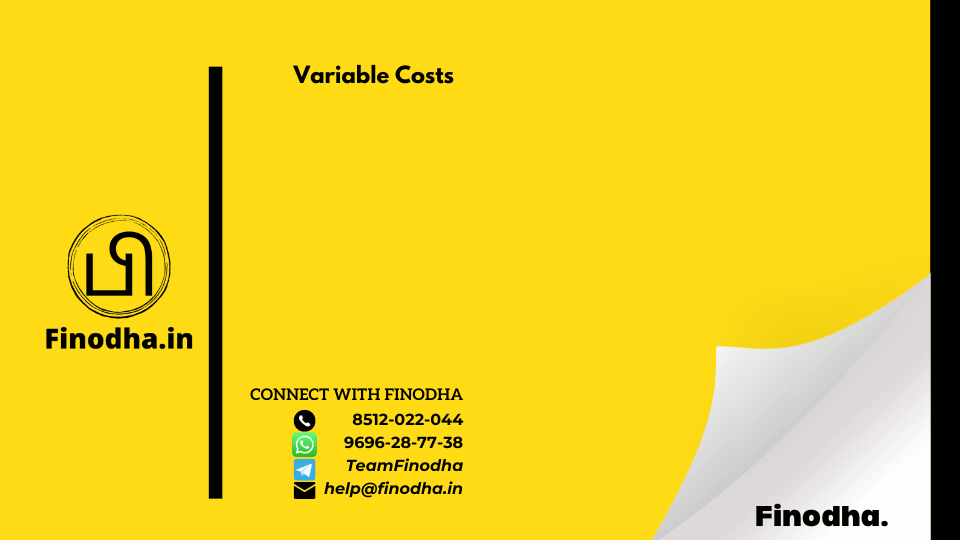Important Keyword: Income from Business & Profession, Income Tax, Variable Cost, Fixed Costs, Semi-Variable Cost.
Table of Contents
Understanding the Nature of Costs:
For businesses, grasping the essence of costs is pivotal for gauging their production expenditure accurately. Costs are fundamentally classified into two categories: variable costs and fixed costs, each possessing unique attributes.
Variable Costs:
Variable cost exhibits a direct correlation with fluctuations in sales volume or production output. As production escalates, variable expenses surge proportionally, and conversely, they diminish with production downturns. Examples of variable costs encompass raw materials, direct labor, and sales commissions. Given their link to output levels, variable costs are often perceived as controllable expenses that can be managed through operational adjustments.
Fixed Costs:
In contrast, fixed costs persist at a steady rate irrespective of alterations in production levels or sales volume within a specified range. These expenditures remain unaltered in the short term regardless of output variations. Illustrations of fixed costs encompass rent, salaries of permanent staff, insurance premiums, and equipment depreciation. Fixed costs are incurred regardless of production activity levels and are perceived as indispensable for upholding operations, regardless of sales fluctuations.
Discerning between variable and fixed costs empowers organizations to comprehend their cost framework better and make informed decisions regarding resource allocation, pricing strategies, and overall financial management. By accurately delineating and scrutinizing these costs, businesses can streamline their production processes, enhance profitability, and ensure sustained viability.
What is Variable Cost?
Understanding Different Types of Costs:
In the realm of organizational expenses, costs come in various forms, including variable cost, fixed costs, and semi-variable costs. Unlike fixed costs, which remain constant over time, variable costs fluctuate based on the production or output of goods and services.
Variable Cost:
Variable costs are intricately tied to the production process, rising or falling in tandem with output levels. These expenses include direct materials, wages, and other operational outlays directly linked to the manufacturing or provision of goods and services.
Semi-Variable Costs:
Semi-variable costs exhibit characteristics of both fixed and variable cost. They consist of components that remain fixed up to a certain production level, beyond which they increase with rising output volumes. Common examples of semi-variable costs include electricity charges and sales force wages.
For instance, electricity costs may remain fixed up to a specified consumption threshold but escalate with additional usage beyond that level. Similarly, a portion of a salesperson’s wage may comprise a fixed salary, while the remainder is contingent upon sales commissions.
Variable Cost Examples:
- Direct Materials: Raw materials essential for product manufacturing.
- Production Supplies: Supplies necessary for machinery maintenance and operation.
- Sales Commissions: Portion of employee salaries tied to sales performance.
- Credit Card Fees: Fees associated with offering credit card services to customers.
- Delivery and Shipping Charges: Expenses incurred for product transportation.
- Salaries and Wages: Compensation for labor involved in production processes.
- Performance Bonuses: Incentives provided to employees based on performance metrics.
Conclusion:
Variable costs play a pivotal role in business operations and profitability. Their flexible nature allows for easier management and adjustment, offering opportunities to enhance profitability and streamline expenses. By diligently tracking variable costs, businesses can gain valuable insights into cash outflows and optimize resource allocation strategies to maximize profitability while maintaining competitive pricing structures.
Read More: Deferred Tax Liability (DTL)
Web Stories: Deferred Tax Liability (DTL)
Official Income Tax Return filing website: https://incometaxindia.gov.in/





0 Comments